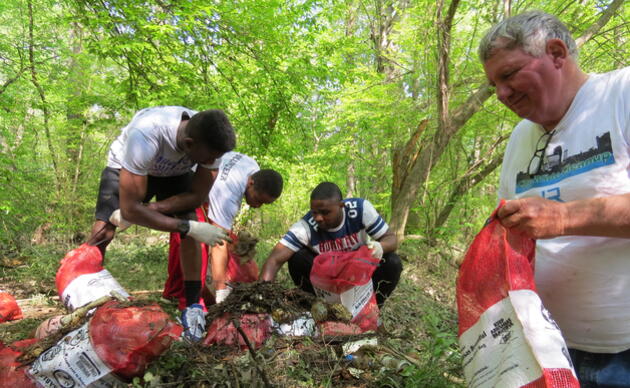WASHINGTON, D.C. — A coalition of conservation organizations represented by Earthjustice filed a lawsuit today challenging the U.S. Army Corps of Engineers’ rushed approval of a massive drainage project in Mississippi’s South Delta, commonly known as the Yazoo Pumps, in the closing days of the Trump Administration. The lawsuit, filed in federal court in the District of Columbia, also challenges the U.S. Fish and Wildlife Service for abdicating its obligations under the Endangered Species Act.
The George W. Bush Administration’s Environmental Protection Agency stopped the destructive project by issuing a Clean Water Act veto in 2008, citing unacceptable damage to some of the nation’s richest wetland and water resources.
However, last spring the Corps revived the Yazoo Pumps in a calculated push that culminated in official approval of the project in the final days of the Trump administration. The unprecedented effort included illegally revoking EPA’s 2008 long-standing veto and circumventing bedrock environmental laws such as the Clean Water Act, the Endangered Species Act, and the National Environmental Policy Act. More than 55,000 citizens, scientists, and public interest groups objected to the Corps’ incomplete and inadequate analysis of the project, submitting extensive comments demonstrating that the Corps ignored the scientific data and law.
“Instead of making a decision based on the science and law, the Corps recklessly approved this ineffective, destructive, and wasteful project,” said Earthjustice attorney Stu Gillespie. “The Corps failed to inform the public about the project’s unacceptable costs and refused to consider alternatives that would provide prompt, effective and environmentally sound flood relief to communities.”
“The Yazoo Pumps would increase flood risk for many people in the area,” said Tom Kiernan, President and CEO of American Rivers. “The Corps’ continued focus on building the Yazoo Pumps is irresponsible when there are better, more cost-effective solutions available.”
“Time after time, the Yazoo Pumps have been shown to be the big lie,” said Louie Miller, State Director for the Mississippi Chapter of the Sierra Club. “The Pumps are not intended to protect communities from flooding but are designed to benefit agribusiness by draining wetlands to intensify farming.”
“Not only will the Corps’ latest proposal degrade at least 39,000 acres of globally significant wetlands but over 82 percent of the Yazoo Backwater Area will continue to flood with the Pumps in place,” said Jill Mastrototaro, Audubon’s Mississippi policy director. “This lawsuit is a last line of defense to protect birds, wildlife and people by ensuring local communities get the effective flood relief solutions they deserve.”
The Yazoo Pumps project would involve construction of a 14,000 cubic-feet-per-second pumping plant in the Yazoo Backwater Area to drain water, primarily from low-lying agricultural lands, during certain types of flood events to facilitate increased agricultural production on those lands. Although authorized by Congress in 1941 to theoretically provide flood control, the Corps admitted in 2007 that 80 percent of the project’s benefits would be for agriculture.
“The pump project’s results will contradict one of its planned purposes,” said Andrew Whitehurst of Healthy Gulf, “The Corps of Engineers estimated in its public meeting response to questions that almost 9,700 acres could be converted to crop land by the pumps even though one of the basic objectives listed by the project’s Supplemental EIS is to provide reduced levels of agricultural intensification.”
The Yazoo Pumps would drain tens of thousands of acres of ecologically rich wetlands that support over 450 species of fish and wildlife, including several federally endangered species, such as the pondberry. Also, the Yazoo Pumps would increase flood risk for downstream communities while failing to provide the promised level of relief to communities in the Yazoo Backwater Area.
Instead of the ineffective, antiquated pumps, the conservation groups are calling for commonsense solutions to reduce flood risk using natural infrastructure and non-structural approaches that can help protect people’s lives, property and livelihoods. These available measures include elevating homes and roads, and paying farmers to restore cropland back to wetlands. See: Alternative Flood Relief Solutions to the Yazoo Pumps
The conservation groups’ legal complaint can be downloaded here.



